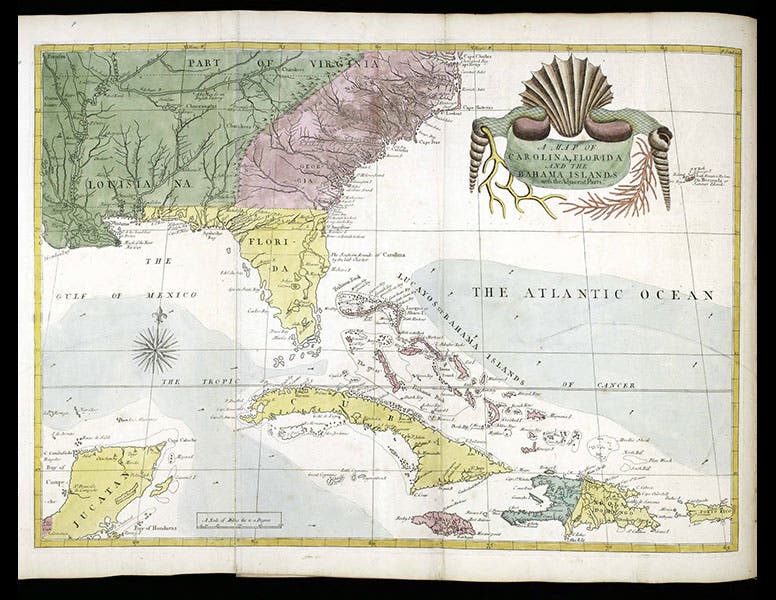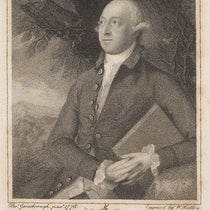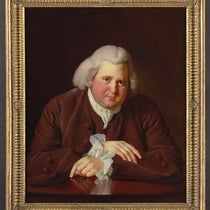Scientist of the Day - Mark Catesby
Mark Catesby, an English naturalist and artist, was born Apr. 3, 1683. When he was 29 years old, Catesby set off for the New World to collect plants and to seek adventure. He started out in Williamsburg, where he had relatives, and gradually explored much of Virginia, collecting plants to sell to gardeners back in England. He stayed for 7 years, returning to England in 1719, now convinced that he wanted to write an illustrated natural history of the southern Atlantic colonies, but needing financial support for such an enterprise. He found willing patrons in Hans Sloane and the Quaker Peter Collinson. In 1722, Catesby returned to the region of North and South Carolina and Georgia, collecting both plant and animal specimens. He also spent nearly a year in the Bahamas.
Finally, in 1726, he returned to England to stay, and he set about drawing and engraving the plates for his projected natural history. The first volume of The Natural History of Carolina, Florida & the Bahama Islands emerged from the press in 1729 (although the title page is dated 1731), with 120 hand-colored engraved plates of nearly 200 species of American flora and fauna. The second volume, with 100 plates, took another 14 years and was finally published in 1743 (with an appendix dated 1747). Together, they comprise the first great work of North American natural history.
Some of Catesby’s plates are as well-known as those of Audubon, who published a century later; the Ivory-Billed woodpecker would be one of those (second image); not only it is a majestic composition, but its subject is almost certainly extinct. His Southern Magnolia (drawn by George Ehret) is equally renowned (third image). When we included Catesby’s book in our Grandeur of Life exhibition in 2009, we displayed these two illustrations. But there are many other plates that deserve to be favorites, such as his blue jay, who looks quite feisty (first image), and a handsome flicker, which Catesby calls the gold-winged woodpecker, posing on a chestnut oak (fourth image). There is also a splendid map of the Carolinas and the Bahamas at the end of volume 2 (fifth image).
The Library’s copy of The Natural History of Carolina is a second edition, published in 1754. All three editions of Catesby’s book are very scarce, and we are happy to have the edition we do.
Dr. William B. Ashworth, Jr., Consultant for the History of Science, Linda Hall Library and Associate Professor, Department of History, University of Missouri-Kansas City. Comments or corrections are welcome; please direct to ashworthw@umkc.edu.











